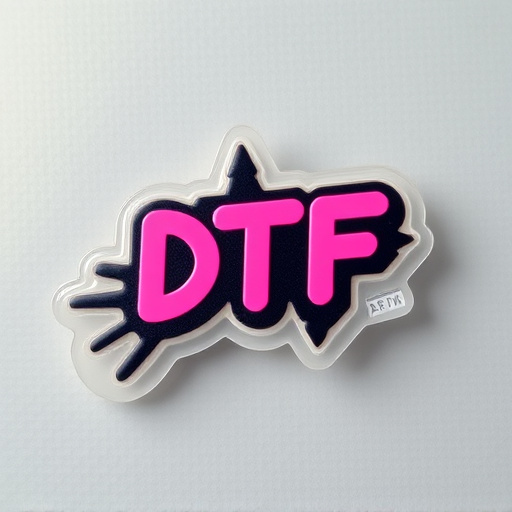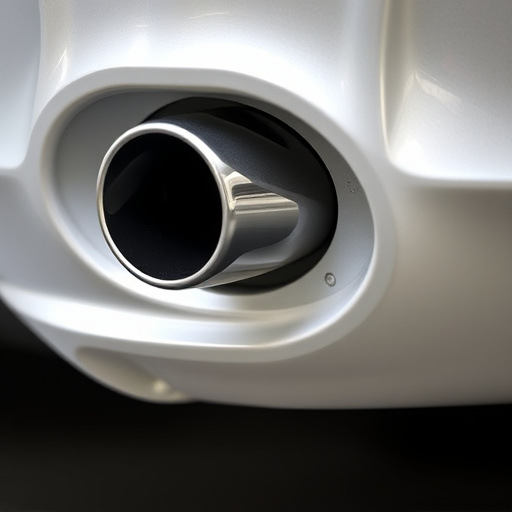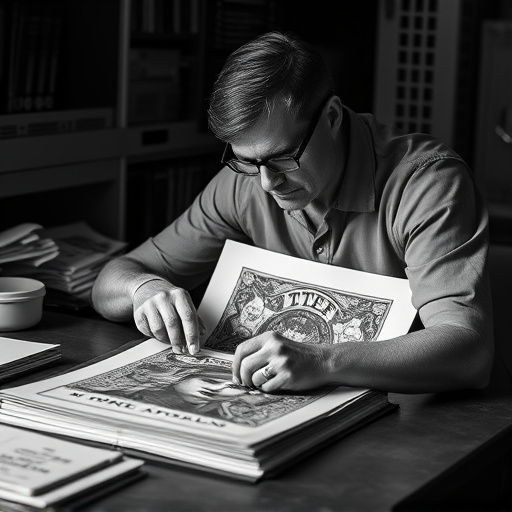Selecting the right fabric and proper pre-treatment are crucial for long-lasting Custom DTF Transfers. High-quality natural fibers offer comfort but require special care, while polyester is durable. Blends for outdoor wear balance both. Meticulous application techniques, including clean workspace, top-tier materials, and precise tools, ensure vibrancy. Sealing with a water-based sealer, avoiding harsh chemicals, and regular cleaning maintain design quality over time.
Looking to achieve long-lasting results with your custom DTF transfers? This guide offers invaluable insights into enhancing the durability of your designs. From selecting the optimal fabric for extended life to mastering precise application techniques and implementing effective sealing strategies, you’ll uncover essential tips to ensure your custom DTF transfers remain vibrant and intact. Elevate your creations today!
- Choosing the Right Fabric for Longevity
- Precise Application Techniques for Consistency
- Sealing and Maintenance Tips for Durability
Choosing the Right Fabric for Longevity

When it comes to achieving long-lasting results with Custom DTF Transfers, selecting the ideal fabric is a critical step. Opting for high-quality fabrics that are durable and suitable for the transfer process can significantly extend the lifespan of your designs. For instance, natural fibers like cotton or linen offer excellent breathability and comfort but may require specific care instructions to maintain their integrity. On the other hand, polyester fabrics are popular choices due to their resilience and ability to withstand frequent washing without fading or losing their shape.
Consider the end use of the garment when making your decision. For items intended for outdoor activities or intense workouts (like hoodies), using a blend of cotton and polyester can provide both comfort and durability. Additionally, pre-treating fabrics with suitable finishings before applying DTF heat transfer paper enhances adhesion and prevents the design from cracking or peeling over time. This simple step ensures that your custom transfers not only look vibrant initially but also maintain their quality for longer periods.
Precise Application Techniques for Consistency

Achieving consistent results with Custom DTF Transfers relies heavily on mastering precise application techniques. When transferring designs onto various materials using direct-to-fabric (DTF) printing, every step must be executed carefully to maintain quality and accuracy. Begin by ensuring your workspace is clean and organized, free from dust or debris that could contaminate the process. Use high-quality DTF inks and make sure your dtf printer is properly calibrated for optimal performance.
Apply the design using a fine-tipped tool or a precision needle for detailed work, allowing for controlled placement of the design onto the fabric. Maintain consistent pressure while transferring to prevent smudging or uneven ink distribution. After application, carefully remove any excess ink or residue to avoid blocking the fabric’s breathability. Practice and patience are key; mastering these techniques will result in exceptional DTF for Apparel outcomes, ensuring your custom transfers stand the test of time.
Sealing and Maintenance Tips for Durability

To ensure your Custom DTF Transfers remain vibrant and lasting, proper sealing is paramount. After applying the transfer to the custom t-shirt or other material, it’s crucial to use a high-quality, water-based sealer. This step creates an impenetrable barrier, protecting the design from fading or smudging due to sweat, washes, or everyday wear and tear. Additionally, maintain the surface where you’ve applied the transfer by keeping it clean and dry. Avoid exposing it to harsh chemicals or excessive heat, which can weaken the bond of the cold peel DTF transfers.
Regular maintenance includes gently cleaning the area with a soft cloth or brush to remove any dust or debris that might accumulate. This simple step prevents small particles from damaging the transfer over time. For added protection, consider storing your custom t-shirts in a cool, dry place away from direct sunlight. These measures will contribute significantly to preserving the sharpness and vibrancy of your Custom DTF Transfers for an extended period.
To ensure long-lasting results with custom DTF transfers, selecting the right fabric, employing precise application techniques, and implementing effective sealing and maintenance practices are paramount. By adhering to these essential tips, you can create vibrant, durable designs that withstand the test of time, ensuring your custom DTF transfers remain a prominent feature on various surfaces for years to come.














